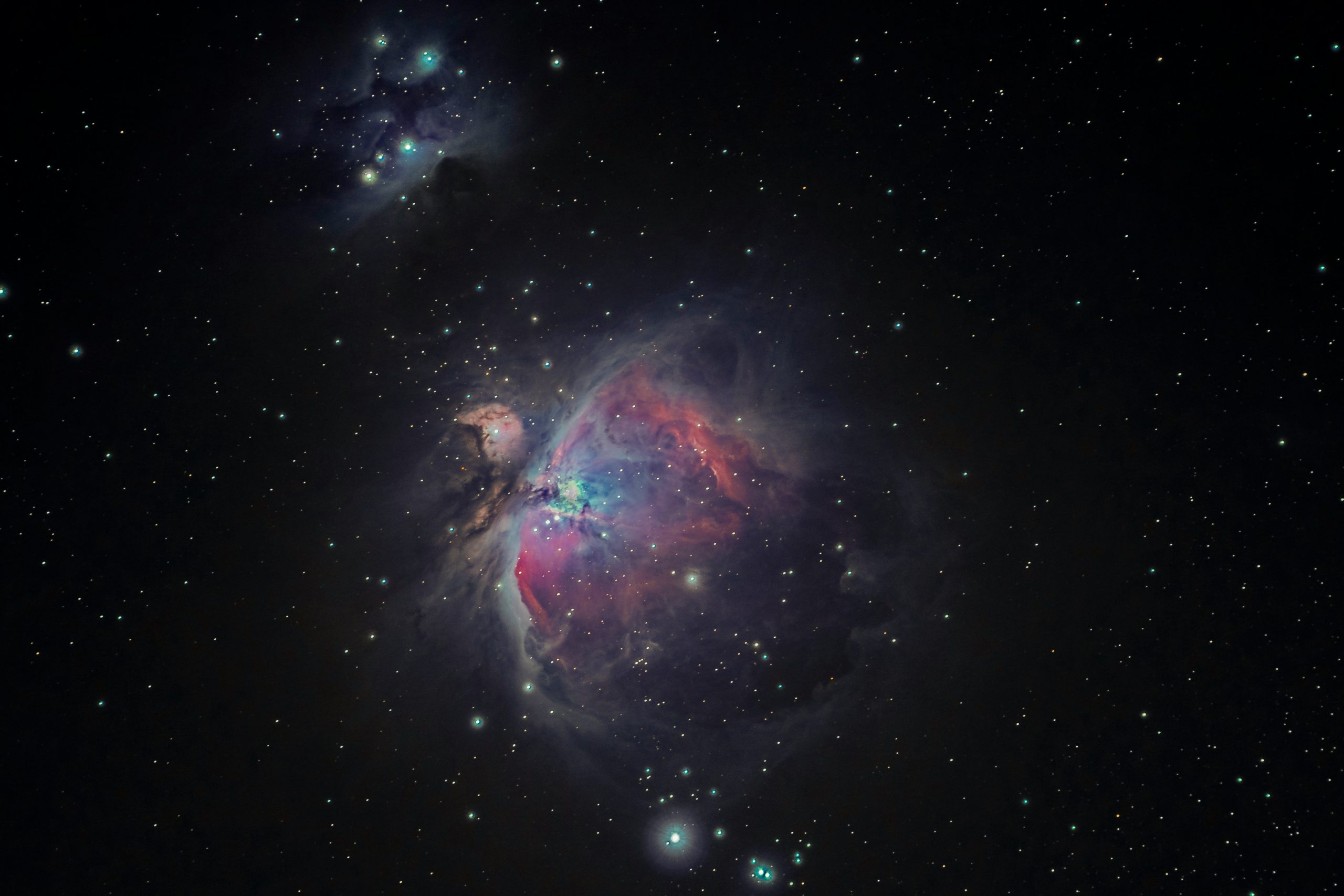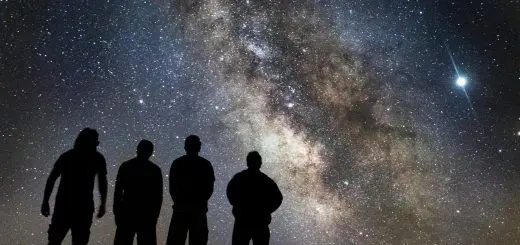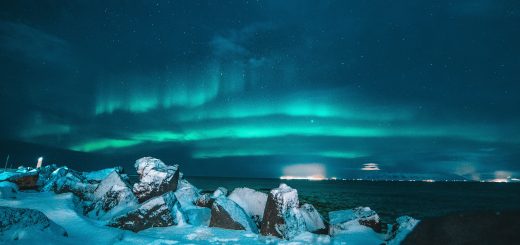What Will the Universe Look Like in the Future?

Looking for more amazing products? Check out our online store and explore our collection here! Happy shopping!
Before diving in, please note: This post is for informational purposes only. If you’d like to know more about how we approach topics, feel free to check out our friendly Disclaimer Page.
Hey there, amazing readers! 
We’re committed to delivering quality posts, and your support (even just sticking around despite the ads) means everything to us. So, bear with us, and thanks for helping us keep the good vibes rolling. Now, on to the fun stuff!
TRANSLATE BUTTON AT THE END OF THE ARTICLE
A Quick Overview
Have you ever wondered what the universe will look like in the future?
Quite a thought, right?
The cosmos is a vast and mysterious place, and while we can’t predict every twist and turn, scientists have made some fascinating predictions based on our current understanding of physics and cosmology.
So, let’s embark on this cosmic journey together and explore what the universe might look like in the years, decades, and millennia to come!
A Glimpse Ahead: The Universe’s Bright Future Awaits
The universe is a magnificent tapestry, woven from countless stars, galaxies, and cosmic phenomena.
As we look to the future, one thing becomes clear: change is the only constant.
The universe has been evolving since the Big Bang, and it shows no signs of slowing down.
Imagine billions of years from now, a cosmos dominated by red giants swathed in brilliant hues.
Stars like our Sun will reach the end of their life cycle, swelling and engulfing nearby planets.
Meanwhile, new stars will ignite in regions rich with gas and dust, giving life to a multitude of celestial bodies.
The cycle of creation and destruction keeps the universe vibrant and dynamic.
As galaxies drift apart due to the universe’s expansion, we’ll witness cosmic loneliness.
But fear not!
Some galaxies will engage in grand dances, merging to form colossal structures.
This union of galaxies won’t be a quiet affair; it will be a glorious spectacle of cosmic fireworks.
We might also see the emergence of a new generation of civilizations.
As technology advances, humanity may forge its path among the stars.
Our descendants could live on distant exoplanets, adapting to new environments and finding creative ways to survive.
Isn’t that an exciting thought?
Cosmic Evolution: How Stars and Galaxies Will Change
Stars are the lifeblood of the universe.
They light up the night sky and influence the formation of galaxies.
Over billions of years, stars will change significantly.
Our Sun, for instance, will transform into a red giant in about five billion years.
It will expand, engulfing the inner planets, including Earth.
But the future isn’t just about older stars fading into oblivion.
New stars will emerge from the stellar nurseries scattered throughout the cosmos.
These regions are rich in hydrogen and other gases, acting as the birthplace for new stars.
As older stars die, they return material to the cosmic ecosystem, nourishing the next generation.
Galaxies are also subject to change.
Explore the Path to Spirituality and Enlightenment – Start Here.
They’ll continue to evolve through a process known as hierarchical merging.
Smaller galaxies will collide and merge, forming larger structures over time.
This process creates a rich variety of galactic configurations, from spiral to elliptical galaxies.
And what about the Milky Way?
Our home galaxy is on a collision course with the Andromeda Galaxy.
This epic encounter will take place in about 4.5 billion years.
Imagine witnessing the birth of a new galaxy, reshaped by this monumental event!
The Fate of Our Solar System: What Lies Ahead?
Our solar system has a unique story to tell.
As the Sun evolves, so will the planets.
When it becomes a red giant, it will expand dramatically, possibly swallowing Earth.
The intense heat will strip away the atmosphere of our planet, turning it into a lifeless rock.
However, let’s not get too gloomy here!
After the Sun sheds its outer layers, it will leave behind a dense core known as a white dwarf.
This stellar remnant will cool over billions of years, losing its brilliance.
The outer planets will fare better during the Sun’s transformation.
Jupiter and Saturn, with their massive gas envelopes, will survive longer than the inner planets.
Their moons, especially Europa and Enceladus, may harbor subsurface oceans, potentially offering a refuge for life.
In the distant future, the leftover debris from the Sun’s final stages might create new bodies.
Planetary remnants could collide and coalesce, forming new celestial objects.
Who knows?
Perhaps future astronauts will explore new planets where once the Sun reigned.
Dark Matter and Dark Energy: The Universe’s Mysteries
Dark matter and dark energy are perhaps the two most puzzling concepts in modern astrophysics.
They make up about 95% of the universe, yet we know very little about them.
Dark matter, for instance, doesn’t emit light or energy, making it invisible.
We know it’s there because of its gravitational effects on visible matter.
As we peer into the future, the role of dark matter will continue to be crucial.
It acts as the scaffolding of the universe, influencing the formation and evolution of galaxies.
Without it, galaxies would drift apart, and the universe would look vastly different.
Dark energy, on the other hand, is even more enigmatic.
This mysterious force is driving the accelerated expansion of the universe.
Scientists speculate that it will continue to dominate cosmic dynamics for billions of years.
Eventually, this expansion could lead to a scenario called the "Big Freeze," where galaxies drift so far apart that they become isolated.
Understanding these cosmic players will be essential for any future exploration.
As we grasp their nature, we’ll unlock the universe’s deepest mysteries, piecing together the cosmic puzzle.
The Expanding Universe: What Will Expansion Mean?
The universe is expanding, and it has been since the Big Bang.
This expansion isn’t just a one-time event; it’s ongoing.
Galaxies are racing away from us, and the farther they are, the faster they move.
This phenomenon is known as Hubble’s Law.
In the future, as the expansion continues, the night sky will look different.
Many galaxies will become invisible to the naked eye.
The Milky Way will remain visible, but our cosmic neighborhood will change drastically.
Distant galaxies will disappear, leaving a dark void.
What does this mean for travelers of the future?
As we venture into space, we might focus on exploring nearby galaxies, as the more distant ones fade from view.
This local exploration could lead to exciting discoveries and interactions with other species.
The expansion could also impact time.
As galaxies move away from us, their light will shift toward the red end of the spectrum—a phenomenon known as redshift.
This means distant objects will appear dimmer and more challenging to study.
Exploring Exoplanets: New Worlds and Possibilities
With the advancement of technology, the search for exoplanets has taken off.
Thousands of these distant worlds have been discovered, and many are tantalizingly similar to Earth.
In the future, we could see a surge in exoplanet exploration.
Imagine sending probes to explore these far-off planets!
Some may have conditions suitable for life.
We might discover oceans on icy moons or lush landscapes on rocky planets.
The possibilities are limitless.
Future telescopes may peer deeper into the cosmos.
They will analyze atmospheres for signs of life, searching for biosignatures—chemical indicators of living organisms.
The thrill of finding extraterrestrial life could become a reality, changing our understanding of life in the universe.
Humanity could also establish colonies on some of these exoplanets.
Imagine a future where we live on a planet orbiting a distant star, adapting to new climates and making innovative discoveries.
As we explore these new worlds, we’ll learn more about our place in the universe.
Each discovery will tell us more about the formation of planets and the potential for life beyond Earth.
The Role of Black Holes in Future Cosmic Landscapes
Black holes are some of the most incredible objects in the universe.
They form when massive stars collapse, creating regions of space where gravity is so strong that nothing can escape.
They may seem like cosmic vacuum cleaners, devouring everything nearby.
But black holes are also essential to understanding the future of the cosmos.
As galaxies merge, supermassive black holes at their centers will eventually collide.
This cataclysmic event will produce gravitational waves—ripples in space-time that we can detect.
In the distant future, black holes could play a significant role in the evolution of galaxies.
They influence star formation and the dynamics of galaxies through their immense gravitational pull.
While they’re often perceived as destructive, they can also foster the birth of new stars.
Black holes may also serve a vital purpose in measuring the universe’s expansion.
As we study their behavior, we can gain insights into dark matter and dark energy, unraveling some of the universe’s biggest mysteries.
Galactic Mergers: How Galaxies Will Unite Over Time
Galactic mergers are a cosmic spectacle.
They occur when two galaxies collide and combine their stars, gas, and dust.
This process can be both chaotic and beautiful, sparking the formation of new stars in the aftermath.
As galaxies drift through space, some will inevitably find themselves on a collision course.
The Milky Way and Andromeda are destined to unite in about 4.5 billion years.
This merging will form a new galaxy, often dubbed "Milkomeda."
During such mergers, the gravitational forces at play can create stunning visual phenomena—like tidal tails and starburst regions.
These areas will glow with the light of newly formed stars, illuminating the night sky for eons.
Galactic mergers also remind us of our cosmic connection.
Every galaxy you see is part of a dynamic, ever-changing universe.
In billions of years, we might inhabit a galaxy that was once two separate entities.
What a poignant thought!
The End of Stars: Understanding Stellar Life Cycles
Stars have life cycles, just like us.
They are born, live, and ultimately die, leaving a lasting impact on the cosmos.
Understanding these cycles helps us anticipate the future of the universe.
Most stars spend the majority of their lives fusing hydrogen into helium in their cores.
This process releases energy, allowing them to shine.
However, once the hydrogen runs out, a transformation begins.
Stars like our Sun will swell and become red giants before shedding their outer layers.
The remnants of dying stars can take many forms.
Some create white dwarfs, while massive stars can explode in supernovae, scattering elements throughout space.
These elements are the building blocks of new stars, planets, and even life.
In the far future, the universe will be filled with remnants of stars.
Red dwarfs, the most common type of star, could dominate, burning slowly for trillions of years.
The universe might become a dim, cold place where only the faintest glimmers of light remain.
Cosmic Technology: How Humanity Will Explore Space
As we peer into the future, it’s hard not to marvel at the potential of human ingenuity.
Advances in technology will enable us to explore the cosmos like never before.
Imagine spacecraft powered by advanced propulsion systems, allowing us to reach distant planets within our lifetime.
We could use ion drives or even harness the power of nuclear fusion for fast interstellar travel.
Robots and AI will play a crucial role too.
They may build structures on distant worlds, gathering data and preparing for human settlement.
These explorers could be the first to step foot on alien terrains, paving the way for human colonization.
And let’s not forget about communication!
We’ll develop sophisticated methods to transmit data across vast distances.
This means we could maintain contact with our colonies on exoplanets, sharing discoveries and experiences.
The excitement of space exploration is contagious.
Each mission will bring us closer to understanding our place in this vast universe, forging connections with new worlds and potentially new life.
The Universe in 10 Billion Years: A Distant Future
Looking ten billion years into the future is mind-boggling!
The universe will be a vastly different place.
As stars continue to evolve and galaxies merge, the landscape will morph into something unrecognizable.
The Milky Way may no longer look as it does today.
It will likely have merged with other galaxies, resulting in a more massive, elliptical structure.
The remnants of stars will scatter throughout this cosmic expanse, reshaping the night sky.
In the absence of visible galaxies, the universe might feel emptier.
The distant galaxies, once visible to our ancestors, will have receded beyond detection.
What remains will be a playground for researchers to unravel mysteries.
Life, if it persists, will adapt to these changes.
Perhaps technologically advanced civilizations will thrive, navigating the challenges of intergalactic life.
They may have evolved beyond physical forms as we know them, becoming entities of pure energy.
This distant future serves as a reminder of the incredible journey ahead.
No matter how bleak the cosmic landscape may sound, the pursuit of knowledge and exploration will continue.
Hope for Life: Will We Find New Civilizations?
The search for extraterrestrial life has captivated humanity for centuries.
As we explore the universe, we remain hopeful that we are not alone.
The discovery of new civilizations would change everything!
Exoplanets are in the spotlight.
With the ability to study their atmospheres, we might detect biosignatures indicating the presence of life.
Whether microbial or intelligent, the implications would be profound.
The universe is a vast ocean of possibilities.
Each star and its planets could harbor life.
We may find civilizations at various stages of development, from primitive to advanced.
Imagine receiving a signal from a distant world!
The excitement and fear of engaging with another civilization would be overwhelming.
What could we learn from them?
What could they learn from us?
Yet, finding life also raises questions.
How would we communicate?
Would they be friendly, or would we have to tread carefully?
These thoughts keep scientists awake at night, and it’s thrilling!
Conclusion
The future of the universe is filled with awe and wonder.
From the transformation of stars to the merging of galaxies, the cosmic landscape will evolve in ways we can only begin to imagine.
As we strive to unlock the mysteries of dark matter and dark energy, our understanding of the cosmos will grow deeper.
The fate of our solar system and the potential for extraterrestrial life remind us of our role in this grand narrative.
As technology advances, humanity’s exploration of the cosmos will transform our understanding of existence itself.
So, the next time you gaze up at the stars, remember that each twinkle is a piece of the universe’s story—a story that continues to unfold, generation after generation.
Let’s embrace this journey together, filled with dreams of discovery and the hope of new worlds waiting to be explored!

The Enlightenment Journey is a remarkable collection of writings authored by a distinguished group of experts in the fields of spirituality, new age, and esoteric knowledge.
This anthology features a diverse assembly of well-experienced authors who bring their profound insights and credible perspectives to the forefront.
Each contributor possesses a wealth of knowledge and wisdom, making them authorities in their respective domains.
Together, they offer readers a transformative journey into the realms of spiritual growth, self-discovery, and esoteric enlightenment.
The Enlightenment Journey is a testament to the collective expertise of these luminaries, providing readers with a rich tapestry of ideas and information to illuminate their spiritual path.
Our Diverse Expertise
While our primary focus is on spirituality and esotericism, we are equally passionate about exploring a wide range of other topics and niches 

To ensure we provide the most accurate and valuable insights, we collaborate with trusted experts in their respective domains 
Our blog originally focused on spirituality and metaphysics, but we’ve since expanded to cover a wide range of niches. Don’t worry—we continue to publish a lot of articles on spirituality! Frequently visit our blog to explore our diverse content and stay tuned for more insightful reads.
Hey there, amazing reader! 
Check out our store here and take a peek at some of our featured products below! Thanks for being awesome!














